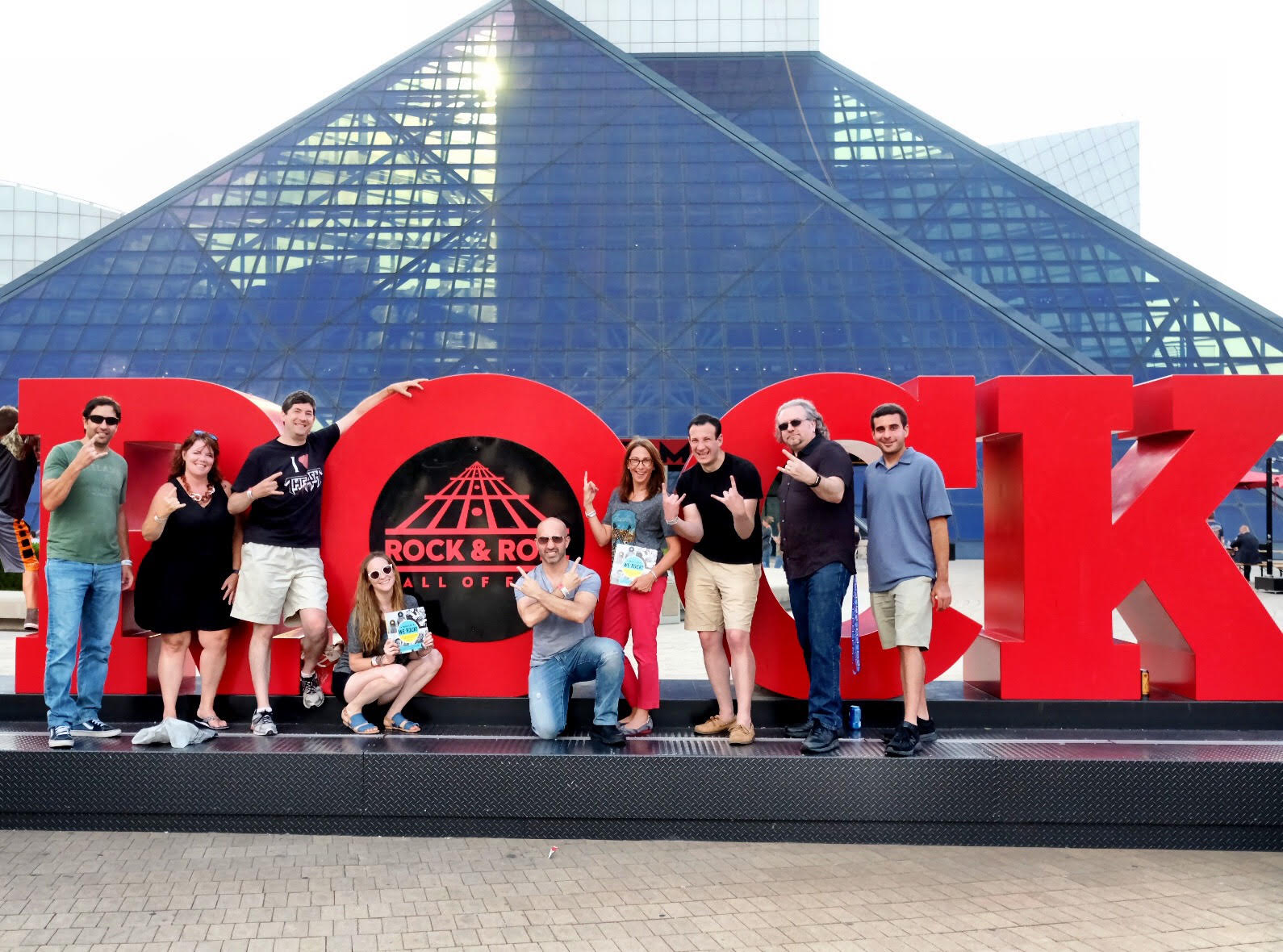Ian Weissman is a New York City public school teacher and also a HeadCount Team Leader. Thanks to The Capitol Community Fund, a joint effort between the Capitol Theatre and HeadCount, Ian was part of a group of educators who went to the Rock & Roll Hall of Fame in Cleveland to learn how to integrate popular music into the classroom.
School may be out for summer, but our group of Tri-State Area teachers (dirty looks and all) were still hard at work this past week at the Rock & Roll Hall of Fame. Thanks to The Capitol Community Fund, an initiative created by The Capitol Theatre and HeadCount, we had the incredible opportunity to travel to the mecca of rock & roll for a jam-packed two days of training on ways to use music in our classrooms.
I was lucky to be joined on this journey by eight of the most creative and passionate fellow educators I’ve ever met. Our group contained teachers of a diverse range of topics spanning from early childhood to college. However, we all shared a common passion for music and sharing it with our students.
Our first day of the Capitol Community trip began with us selecting “desert island” albums, a difficult task for a group whose musical tastes range from Slayer to Van Morrison. Then came a workshop focused on one song: David Bowie’s “Space Oddity”. We were asked to pretend that we had never heard of the song or Bowie and to put ourselves in the shoes of our students. Over the course of the workshop, we dissected every piece of the song from the mood to the symbolism in the lyrics to the instrumentation to the different album covers used in the UK and US releases. It was incredible to see how much information can be pulled from just one song and our group discussed countless ways to use this activity in our classes.
We also got a sneak peek of the Rock Hall’s new digital education platform, which is still in development. We’re all really excited to get our hands on the finished product.
Then we got to explore the museum. For a music junkie, such as myself, this place is heaven. From Phish’s flying hotdog that hangs from the ceiling to Johnny Ramone’s iconic leather jacket to Pete Seeger’s banjo head to John Lennon’s Mellotron used to compose “Strawberry Fields Forever,” the museum has it all.
Our first day ended with a concert from The Ohio Weather Band on the stage right outside the Rock & Roll Hall of Fame, a perfect location to take in a band who you will certainly be hearing more from in the coming years.
The next day we had a session, entitled “Roots of Rock & Roll: An American Journey,” had us looking at blues, gospel, and country as the precursors to rock & roll. Our discussion had us listening to Muddy Waters’ “Got My Mojo Working” and trying to define “mojo.” It was really useful for us to see rock music as part of a larger story and think of ways that we can make different types of music accessible to our diverse students.
The second class we were introduced to was “Fight the Power: Music as a Social Force.” As the title suggests, this class focuses on music as a form of protest and an agent of social change. Our workshop had us focus on the Greenwich Village folk revival during the 1960’s and its roots with Woody Guthrie and Pete Seeger. We broke down Bob Dylan’s “Blowin’ in the Wind” and talked about the ways the song can be used to teach symbolism, rhetorical questions, and the historical events of the Civil Rights Movement and Vietnam War. It was really useful to learn techniques for using one song as a study for a larger topic.
We ended our final day with a field trip to the Rock & Roll Hall of Fame Library & Archives at Cuyahoga Community College. This got all of our brain’s swirling about how we can use the Rock Hall’s extensive collection of music artifacts to teach about a wide variety of topics. After the workshop, we were let loose to explore the candyland that is the Rock Hall library. Members of our group grabbed titles ranging from Running With The Devil: Power, Gender, and Madness in Heavy Metal Music to No Simple Highway: A Cultural History of the Grateful Dead. I was lucky enough to get to dive into an archival box filled with artifacts from one of my favorite bands, The Replacements.
With music and arts programs constantly in danger of budget cuts, it’s inspiring to know that each member of our group will be sharing the gift of music with thousands of our students over the remainder of our teaching career, a gift we wouldn't have without the Capitol Community initiative.
Thank you to the staff (Mandy Smith, Jason Hanley, Leah Branstetter and Anastasia Karel to name a few) at the Rock & Roll Hall of fame for incredibly useful and motivating workshop. We all learned so much from you and hope to continue our relationship with the museum.
A HUGE debt of gratitude to the Capitol Community program, The Capitol Theatre and HeadCount for making this all possible. To know that there are organizations out there who care so much about teachers and their students keeps us all motivated.
Rock on!
